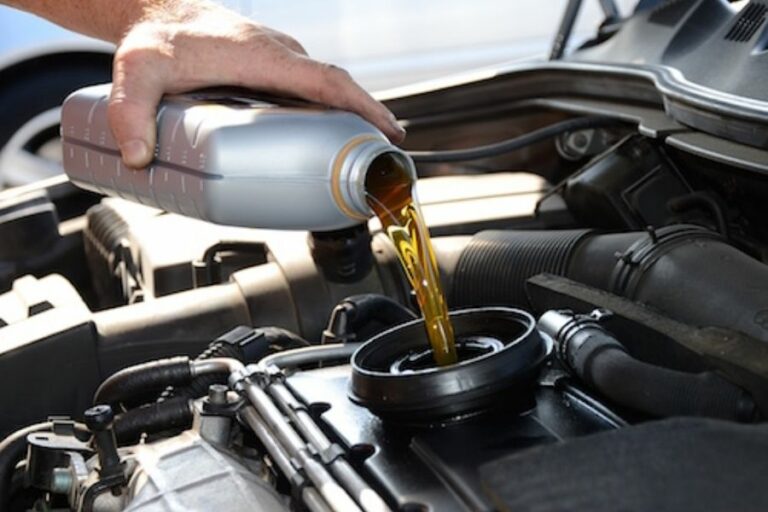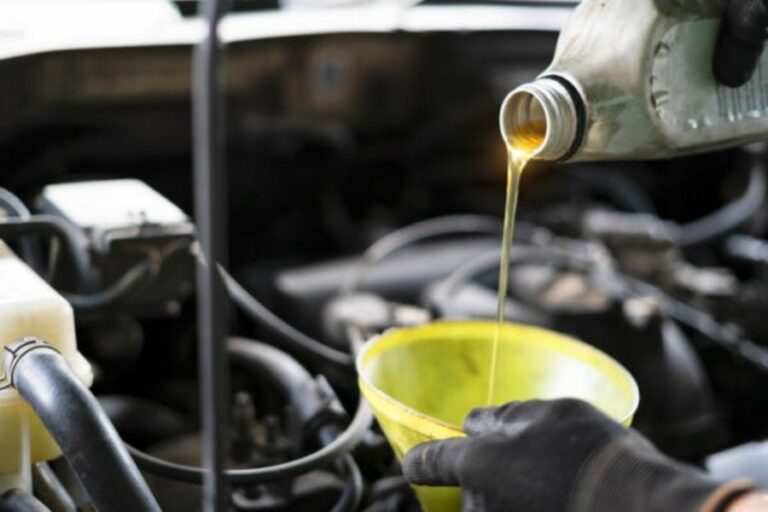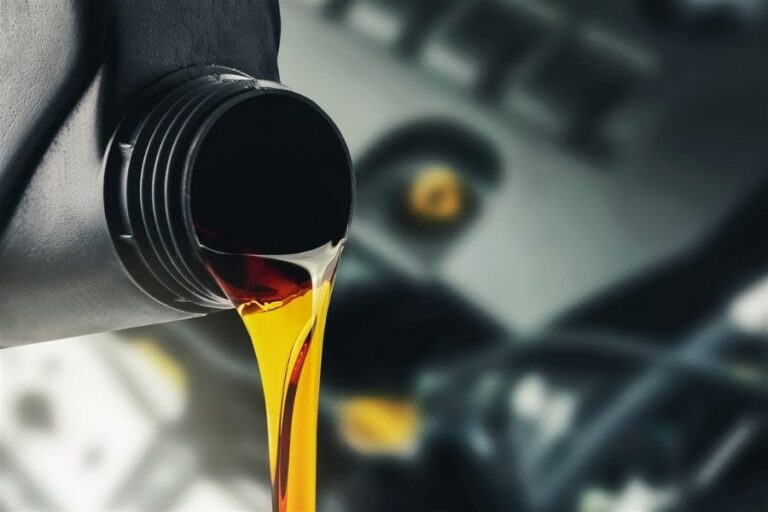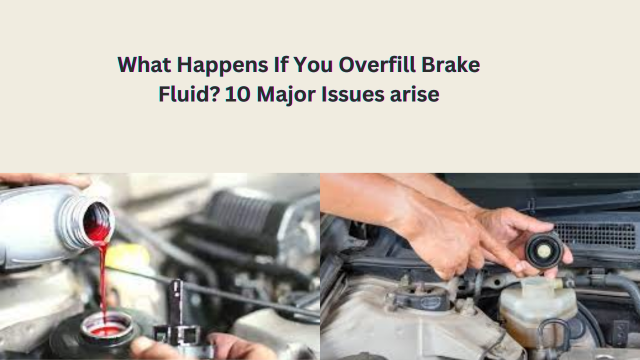How Long to Let Engine Cool before Adding Oil
Whatever vehicle you have, you need to add engine oil from time to time to keep the proper level reading for high performance. For a car that is not in use, adding the engine oil is completely safe. But a running car has a hot engine, so pouring the oil on it can bubble up and result in serious outcomes. One must let the engine cool before adding oil to avoid burns. Here arises a question:
How long does it take to let engine cool before adding oil? In the case of a parked vehicle, when your engine is already in a cool state, you can pour the oil without wasting any minute. For a recently driven car, you need to wait for around 30 to 40 minutes to let the engine cool. Under special conditions like hard driving, diesel engines, or hot weather conditions, the cooling time is around 60 minutes. Adding oil to a hot engine leads to life-threatening burns and adversely affects the engine parts and their performance.
In this article, we will provide you with complete guidance about all the safety precautions to add engine oil safely. We will also point out the warning signals of a too-hot engine and its consequences to be careful. So, stay with us.
How long does it take to let engine cool before adding oil? Recommended Time!
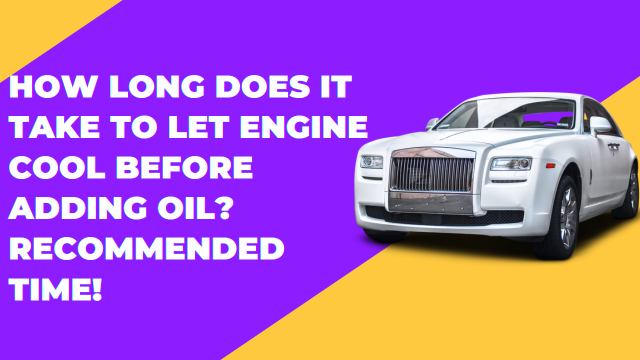
Do I need to wait to let the engine cool before adding oil? Of course, yes, when the car is moving, the engine works fast and turns really hot. The next question that arises in the mind is the recommended time duration that you must wait before adding the engine oil.
We will provide you with the approximates, both for normal conditions and under specific conditions.
Cooling Time According to General Guidelines
A driven car has a very hot engine, and usually, the engine takes 30 to 40 minutes to cool down. You need to wait for that period before pouring new oil. During this time, the oil will also settle in the pan, so you can take the right oil reading to check the deficiency.
Cooling Time under Specific Circumstances
The time mentioned above is for routine conditions. Certain factors increase this limit as the engine becomes extremely hot, and it takes a longer time to cool down. For example, weather conditions also play an essential role in making the engine hot.
Driving your car on hot days for longer periods is one of the factors that expand the cooling time. Furthermore, the type of engine also defines the time duration. The gasoline engine needs less time, while the diesel engine takes more time to cool down.
Furthermore, when driving in hilly areas, you need to use the brakes quite often so the engine gets hot extremely. In all such scenarios, one must wait for at least an hour before pouring new oil to avoid accidents or costly repairs.
Factors that Turn an Engine Hot
Just like any other machine, engines work fast during car drives, and their functioning results in high-temperature levels. A hot engine is normal when you are driving, but too much heat may cause issues.
Here, we will pinpoint various factors that result in overheating an engine. By understanding all these factors, you can understand the right time to let engine cool before adding oil. Here is the list of the possible reasons:
- The engine operates in a number of explosions generated by the mixture of air and fuel when you start a vehicle. These explosions generate heat energy.
- The heat generated when the engine is working is controlled within a safe range with the radiator, coolant, and fan. The technical fault of these components results in overheat.
- Extreme hot weather conditions may cause the engine to overheat
- Improper oil management is also a prominent cause of heating the engine as engine oil also acts as a coolant, so a lower oil level causes overheating.
Consequences of Adding Oil to a Hot Engine
It is not recommended to add oil to a hot engine as this act is not only dangerous for your safety but also adversely affects the performance of your vehicle. When you add oil to a hot engine, the temperature of oil rises quickly, which results in breaking down the components. This breakdown reduces the lubrication qualities and results in wear and tear.
Moreover, pouring oil on a hot engine may lead to cracks in the seals or gaskets. This condition results in leakage of the oil and affects the car’s performance. Hot engine oil can also mold the shape of metal components and make them wear out quickly. Along with all these consequences, the chances of oil burns are high with the bubbling of the hot oil.
Now, the next thing that matters is the right way of adding oil to an engine. So, let’s see the steps in the next heading.
Right Way of Pouring Engine Oil: Step-by-Step Guide
Turn off your car to let the engine cool and wait around 30 to 60 minutes, depending upon all the factors mentioned above. Then, you need to perform the following steps:
Examine the Oil Level
When you are sure that the engine is cool, take off the dipstick and cleanse it with the help of a cloth. Now, insert the dipstick again and take it out to see the level of oil that your engine has. The level should be below the maximum mark but above the minimum mark.
Pouring Oil if Required
If the oil level is not in between the maximum and minimum mark lines, then you need to add more oil. For this purpose, unlock the oil filler cap that is at the top of the engine. Don’t pour the oil at once. Rather, pour a small amount at a time.
Examine New Oil Level
After adding the oil, you need to check the oil level by following the first step. Make sure to wait for a few minutes for the new oil to settle before checking the oil level reading. With the help of a dipstick, you can ensure you pour the right amount. Repeat the process by adding the oil in a small amount until you get the right level.
Locking Oil filler Cap and Dipstick
Lock the oil filler cap at the end and keep the dipstick in place.
You may also read Tip Of Oil Dipstick Broke Off
Tips to Follow for Extra Safety
Along with the steps mentioned above, you need to follow safety tips that make your experience more secure yet effective.
- Dirt or debris can hinder the performance of an engine to the maximum levels. So, make sure you use a clean funnel to pour engine oil to avoid mixing impurities.
- You to need to fill up to the suitable level. If a lower limit affects the performance, the other situation is also not recommended, such as overfill. In case of overfill, the oil exerts more pressure and may lead to damaged seals.
- Never mix two different types of engine oils and use the one that is recommended by the manufacturers every time.
- Park your car at a level surface while pouring or changing engine oil. This way, you can check the true oil level readings. So, you will be pure only the required amount.
By following all these steps, your engine will work effectively for longer periods without requiring frequent repairs.
FAQs
Here are some frequently asked questions about how long to let engine cool before adding oil.
What are the basic functions of a vehicle’s engine oil?
A car cannot perform well without an adequate amount of engine oil because it provides lubrication to reduce friction when different parts of the engine are in motion. Additionally, it plays a vital role in preventing corrosion and transferring the energy generated by the controlled explosions of the engine.
When is the right time to change engine oil?
Engine oil needs to be replaced after every 3000 miles. If you are using oil with modern lubricants, then the maximum limit is around 5000 to 7500 miles. Moreover, when you are using full-synthetic oil, the limit may go up to 15000 miles.
How long does it take to change engine oil?
The process of changing the engine oil of any vehicle is quite simple. You need to drain out the old oil, and after cleaning the filter, new oil is poured. So, it hardly takes 30 to 40 minutes to complete all these steps.
Bottom Line
Meeting all the necessary guidelines for the optimum functioning of the engine ensures the high-end performance of the vehicle. One must be careful in maintaining the right level of engine oil and replacing the old one within the recommended period.
This requires pouring new engine oil in case of deficiency from time to time. But one must let engine cool before adding oil; otherwise, a hot engine will make the oil boil. As a result, it will bubble up and result in burns.
Not just burns, such hustle will end up in major repairs. That is why we have mentioned all the factors that indicate that your engine is too hot to pour oil and the suitable time duration for making it cool down. Also, you need to follow all the necessary steps mentioned above to fill the oil safely.

